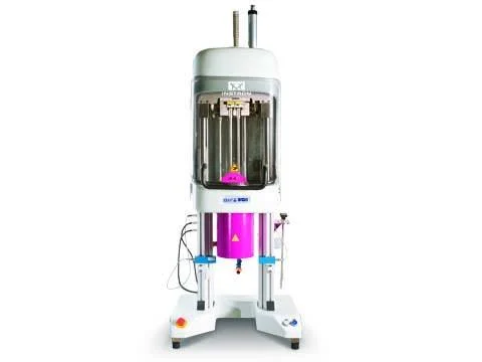ISO 11443 Research, Design and Quality Assurance for Injection Moulding
High quality sports goggles are mandatory wear in a variety of activities. Often visual or mechanical properties are important for safety, but also for proper enjoyment of the sport. In the Paralympic sport of goalball, for example, the goggles must completely block out the user from all visual perception. Additionally, some goggles are designed with thermal properties in mind to help prevent the inside lens from getting too cold and ‘misting over’. The quality of these goggles rests heavily on the ability of the manufacturer to injection mold plastic components without imperfections and the CEAST SmartRHEO series is a vital aid in achieving this goal.
The imperfections resulting from poorly implemented injection molding compromise the goggles and their effective use. Melt fractures induce stress concentrations which inhibit durability; rapid solidification results in insufficient mold filling which causes discomfort and inhibits insulation. Also thermal degradation can affect the physical properties of the goggles, making them weaker. The CEAST SmartRHEO Capillary Rheometer simulates the injection molding processes by imposing a defined shear rate on the thermoplastic melt. The pressure experienced by the melt is measured, and flow stability or instability can be determined.
The data produced from running tests such as ISO 11443 and ASTM 3835 using the CEAST SmartRHEO is invaluable in mold design and research, as well as the selection of appropriate thermoplastics. Processing parameters can be optimized in this way, and design decisions informed by the simulation of shear rates. For example, it can be determined that the material is stable or unstable under processing conditions or is likely to undergo thermal degradation.
One of the problems experienced when processing non-Newtonian fluids is one of die swell. This is where the fluid exhibits elastic properties – ordinarily impossible in ideal fluids. The fluid is compressed in the chamber and upon release ‘springs back’ to its original proportions. This effect can be measured using an accessory to the capillary Rheometer, which uses lasers to determine the width of the swell.
The versatility of the capillary Rheometer is extensive; PVT tests require only a unique sealed die, and measure the effects of varying temperature pressure and volume on the fluid; while thermal conductivity tests measure the transfer of thermal pulses through the fluid. This data is helpful for preventing design errors which would result in insufficient filling, residual stresses and distortions.
CEAST SmartRHEO Series: Capillary Rheometer Systems
Thermoplastic materials are processed as fluids under the effect of temperature and pressure. The ability of plastics to be formed into a wide variety of shapes, by the common plastics conversion processes, has a fundamental importance in polymer science and application. The innovative Instron® line of CEAST SmartRHEO Series of Capillary Rheometer systems are designed for an accurate investigation of the rheological properties of polymeric materials.
- Produtos
- 09/22/2014
- 3.45 MB

